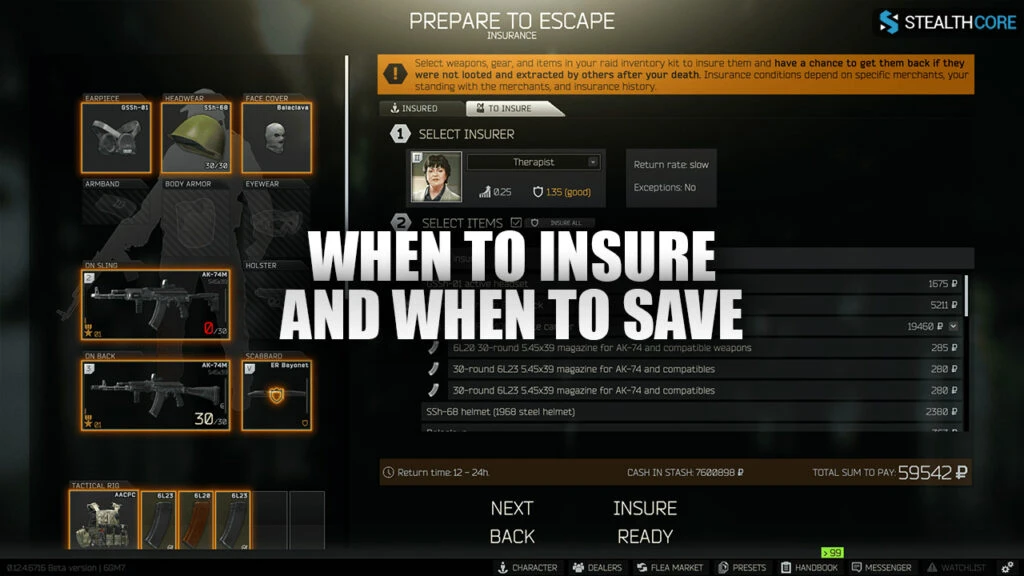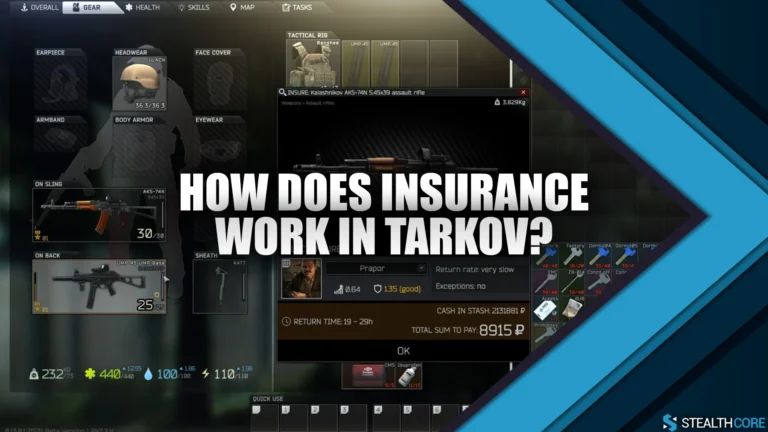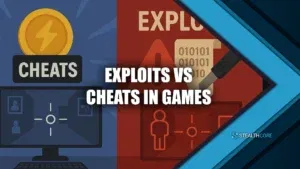Hate losing all your gear and loot in a raid? How does insurance work in Tarkov? Read on and let’s keep your items safe.
After surviving one of your most nerve-racking raids in Tarkov, you somehow manage to come out alive and are now in possession of the best gear of your life. Or so you think – until a single headshot was all it took to lose it all.
In a competitive game like Tarkov, losing your gear and all the valuable items can be tough. This time, you might need insurance—a system that helps you recover some of your items after being taken out, as long as they aren’t picked up by other players.
In this guide, we will discuss how insurance works in Tarkov and what you can expect from it. I’ll also explain why it’s a useful feature and why you should take advantage of it.
How Does Insurance Work in Tarkov?
Insurance in Escape from Tarkov (EFT) allows you to potentially get back the gear you lost during a raid. However, there are rules: if you don’t make it out before the raid timer expires, you won’t get any of your insured items back.
Most types of gear, such as armor, helmets, guns, rigs, backpacks, magazines, and headsets, can be insured, but the ammo inside magazines is not covered. Insured items are marked with a yellow border and shield icon. Once returned, these items lose their insured status and need to be insured again.
The cost of insurance is based on the trader’s value of the item, so more expensive gear will cost more to insure.
The Insurance Process
When preparing for a raid, you can insure your items in two ways: by right-clicking an item in your stash and selecting “Insure,” or during the pre-raid screen.
Most players find it easiest to use the “Insure All” option on the pre-raid screen to cover all eligible items with one click. Keep in mind that insurance does not work on the Labs map, so anything lost there will not be returned.
Choosing Your Insurer: Prapor vs. Therapist

There are two insurers in Tarkov: Prapor and Therapist, each with its own pros and cons.
- Prapor: Charges less but has a longer return time of 24-36 hours and only holds items for four days.
- Therapist: Charges more but returns items faster (12-24 hours) and keeps them for six days.
The best choice depends on your budget and play schedule. If you log in daily, Prapor’s delay may be manageable. However, if you play less frequently, Therapist’s faster returns might be more convenient. Upgrading your Intel Center in the Hideout can reduce return times for both insurers.
Strategies for Maximizing Insurance
Smart players can use insurance to their advantage through tactics like “insurance fraud.” For example, if you find better gear during a raid, you can hide your insured items in a bush or another obscure spot. If no one finds them, you’ll get them back.
This method is even more effective when playing with a squad, as teammates can pick up your insured items and stash them to ensure their return. Keep in mind that consumable items like ammo, meds, and grenades are not covered by insurance.
Item Selection
To fully understand how insurance works, it’s important to know which items are worth insuring.
High-value items such as class 5-6 armor and top-tier helmets are usually looted and may not be worth insuring. On the other hand, mid-tier items are often left behind, which increases the chances of getting them back. For instance, class 4 armor is less likely to be looted compared to class 5 or 6, especially if the player who finds it already has good gear.
Insuring mid-tier items rather than top-tier ones can improve your chances of recovering them, especially if the items are heavy and difficult for players to carry due to weight penalties.
Playing with Friends
Playing with friends can enhance the benefits of insurance. Teammates can help hide your insured gear if you die, stashing it in hard-to-find locations to ensure it is returned. It’s generally understood that squadmates will stash valuable items like guns and armor, but they may keep consumables since you won’t get those back through insurance.
When to Insure and When to Save

Consider your playstyle and strategy when deciding what to insure. If you’re using high-value, easily looted items like hex grids, fast MT helmets, or slick armor, it may not be worth insuring them because they’re likely to be taken. However, if you’re using mid-tier gear that’s less appealing to other players, insurance can be a good investment.
Learning which items are worth insuring and which are not can save you money over time and help you get the most out of Tarkov’s insurance system.
Conclusion
Now you won’t be asking “how does insurance work in Tarkov?”. With this knowledge, you can take advantage of insurance and its features so you can make the most out of your raids without any fear of losing your own gear.
While insuring your gear can be a lifeline, it’s not a guarantee. Choose your gear wisely based on risk and value, and remember to check your returned items promptly. With a bit of planning, you can get your favorite loadout back and be ready for the next raid.
If you want the highest possible chances of not only protecting your loot and gear but also getting the best in the game, our EFT hack is something you should try. It comes with an ESP that lets you see both the opponent’s and loot’s locations and an aimbot that guarantees your shots always hit.


